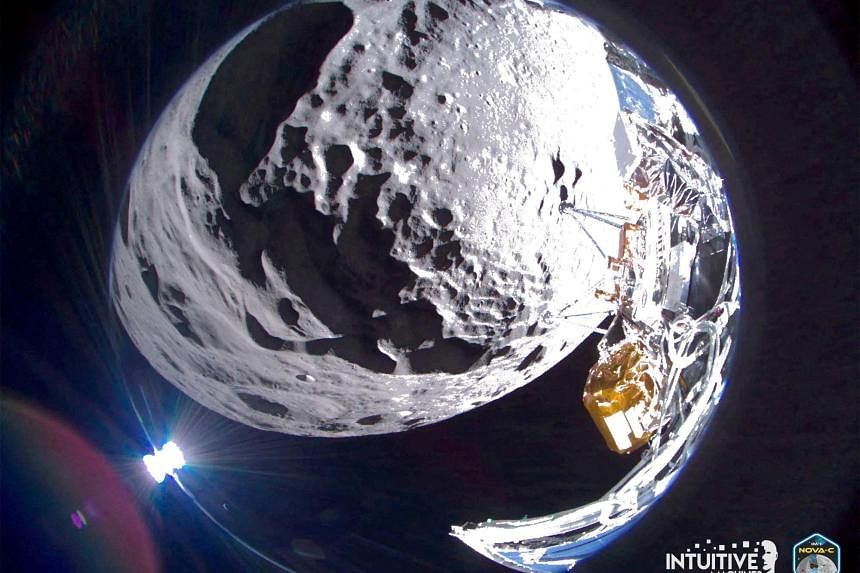HOUSTON - Engineers on Earth expect to lose radio contact with private US Moon lander Odysseus on Feb 27, effectively cutting short the mission five days after its sideways touchdown, said Intuitive Machines, the company behind the spacecraft, on Feb 26.
The National Aeronautics and Space Administration (Nasa), which has several research instruments aboard the six-legged vehicle, had said that those payloads were designed to operate for seven days on solar energy before the Sun was due to set over the landing site near the Moon’s south pole.
Company executives told reporters on Feb 23, the day after Odysseus landed, that its payloads would be able to function for about nine or 10 days under a “best-case scenario”.
However, the company also had acknowledged then that the spacecraft had caught the bottom of one of its legs on the uneven lunar surface on its final descent and tipped over, coming to rest horizontally, apparently propped up on a rock at one end.
As a consequence, exposure of the vehicle’s solar panels to available sunlight, necessary for recharging its batteries, was left substantially limited, and two of the spacecraft’s antennae were left pointed towards the ground, impeding communications with the lander, the company said on Feb 23.
Intuitive Machines executives said then that its engineering teams would need more time to assess how the overall mission would be affected.
In an update on the status of the mission posted online on Feb 26, the Houston-based company said: “Flight controllers intend to collect data until the lander’s solar panels are no longer exposed to light. Based on Earth and Moon positioning, we believe flight controllers will continue to communicate with Odysseus until Tuesday morning.”
Shares of Intuitive Machines plunged 35 per cent on Feb 26, after falling 30 per cent during extended trade on Feb 23 following news of the spacecraft’s sideways landing.
Despite its less-than-ideal touchdown, Odysseus became the first United States spacecraft to land on the Moon since Nasa’s last crewed Apollo mission to the lunar surface took astronauts Gene Cernan and Harrison Schmitt there in 1972.
It was also the first lunar landing by a commercially manufactured and operated space vehicle, and the first under Nasa’s Artemis programme to return astronauts to Earth’s natural satellite later this decade, before China lands its own crewed spacecraft there. REUTERS

